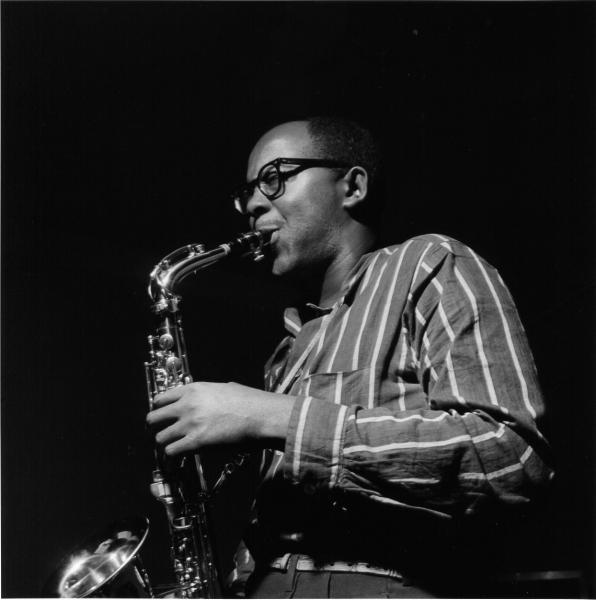Gigi Gryce: alto saxophonist, flutist, composer, teacher
George General Grice Jr: born Nov. 28, 1925 in Pensacola, FL; died March 14, 1983 in Pensacola
Some eyebrows were raised at NEJA’s fall conference in Hartford when the Hartford Jazz Society nominated Gigi Gryce for the New England Jazz Hall of Fame. Gryce was from Florida and lived most of his adult life in New York. However, NEJA’s criteria for eligibility into its Hall of Fame includes those who spent a significant part of their lives in New England, and the case for Gryce’s inclusion was more than amply made in Rat Race Blues, the Musical Life of Gigi Gryce by Noal Cohen and Michael Fitzgerald. The chapter titled “Education: Hartford and Boston,” zeroes in on the significance of Gryce’s years (1946-1952) in New England.
After completing a stint with the Navy, Gryce joined his sister Harriet and her husband in Hartford in 1946 and continued to spend time there even after enrolling in Boston Conservatory in 1947 on the G.I. Bill. His musical soul mates in Hartford included pianists Emery Smith and Norman Macklin, bassist Clifford Gunn and, especially trumpeter and educator Clyde Board. To quote a passage from Rat Race Blues:
According to Macklin and Smith, Board was very involved in music education in an informal manner. Gryce’s interest in teaching and developing young people would eventually result in a long career in the New York City public school system. The first seeds of his inclinations in this area may have been sown in Hartford through his relationship with Board.
In Boston, Gryce became a member of Musicians Local 535, which represented the area’s African-American musicians and a few white jazz players, too. He played second alto with Jimmie Martin and the Boston Beboppers, a remarkable rehearsal band at the union hall that included Jaki Byard, Hampton Reese, Sam Rivers, Joe Gordon, Lennie Johnson and Andy McGhee. Gryce also worked in Tasker Crosson’s society band and played with and arranged for Sabby Lewis, who led Boston’s busiest swing band.
During this period, Gryce’s talents were discovered by visiting jazz artists such as Stan Getz and Horace Silver, and Gryce became part of the Boston-New York jazz pipeline that dated back to alto saxophonists Howard Johnson and Johnny Hodges of a generation earlier. He was also part of key support systems that helped build the foundation for the music scene in Boston and throughout America in the 1940s and 1950s—the church, the public schools, the musicians union, the US military and the G.I. Bill.
—Brent Banulis

Gigi Gryce (Photo by Francis Wolff, courtesy Michael Cuscuna)
